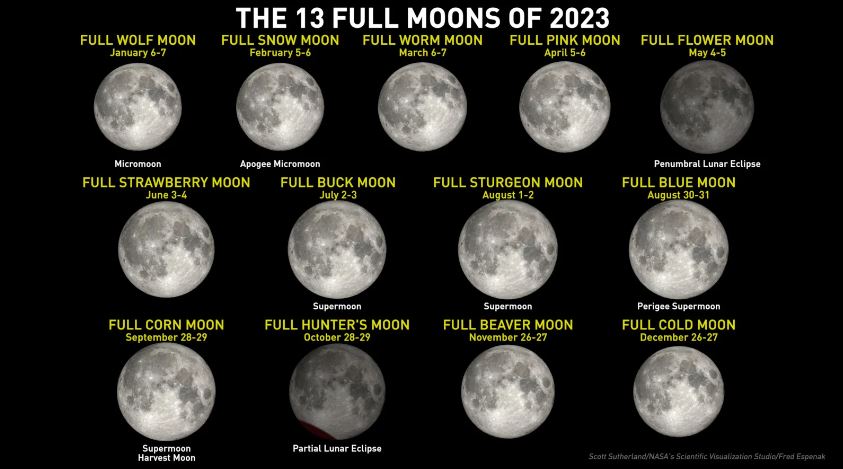
In any given calendar year, there are typically 12 Full Moons — one occurring in each month. Every once in awhile, though, due to the exact timing of when the Full Moons occur, we get an extra one, meaning we have 13 Full Moons for the year, one during each of 11 months, and one month with two.
Since we only have 12 popular names for the Full Moons, the extra one goes nameless. Thus we call it a Blue Moon.
Blue Moons aren’t very rare on their own. Typically, they happen about once every two-and-a-half to three years. The last one was the Halloween Blue Moon on October 31, 2020. However, once in awhile there’s a special year when we get two, like in 2018, when there were Blue Moons on January 31 and March 31 (with no Full Moon in February that year). The next Blue Moon will be on May 31, 2026, although, there is a different kind of Blue Moon before then.
A ‘super’ Blue Moon.
A supermoon occurs when the Moon turns full at the same time that it is near its closest distance to Earth along its elliptical orbit. Thus, being closer to us, supermoons appear bigger and brighter in the sky. Since we see between two and five supermoons each year, it doesn’t take too long for one to match up with the second Full Moon in a calendar month. The last blue supermoon was a little over 5 years ago, on January 31, 2018, which was also a total lunar eclipse (the Super Blue Blood Moon). The next one doesn’t occur until January 31, 2037, which — strangely enough — will be another Super Blue Blood Moon!
Wednesday, August 30, the Blue Moon was an especially rare one, though. It was a Perigee Blue Moon.
Of the handful of supermoons we see each year, one is always the closest, biggest and brightest of them all. It’s the ‘superest’ of the supermoons. This is known as the Perigee Supermoon or Perigee Moon.
There’s one Perigee Moon every year, and they’re spaced apart by around thirteen and a half months. Match this up with the roughly 30-36 months betwen calendar Blue Moons and the variations in timing make Perigee Blue Moons quite rare.
It’s been over 27 years since the last Perigee Blue Moon, which occurred on July 30, 1996. The next one, though, isn’t until December 31, 2115. That’s over 92 years from now!
Source: The Weather Network










































